A day with Mortimer Moss. 1846-1899

On the 29th of March 1846 Mortimer Moss entered the world, the son of Hague Moss and his wife Martha who had married at St John’s Halifax exactly 9 months before. Hague was 20 and Martha 21 when they married, typical ages for marriage in the mid nineteenth century. The couple would go on to have at least seven more children. The family set up home in Garden Square in Hebden Bridge, an area now occupied by the Town Hall that was once the garden attached to The Hole in the Wall pub. There’s no evidence of a ‘garden square’ in the centre of Hebden Bridge now but I found this reference to it. In 1927 an article in the Hebden Bridge Times contains the following reminiscence: “Going up Lower Scout one is reminded of the narrow strip of land and Pitt Street where a few cottages and a smithy stood between the old bridge and St George’s Bridge. Then a fine garden, full of fruit trees, extended from the old buildings by the Council Offices right on to Messrs. R. B. Brown’s works. It was a picture to see, but even that was once darkened by tragedy, for while the gardener and some of his children were in the garden someone threw a stone from the Scout, killing one of his sons.”
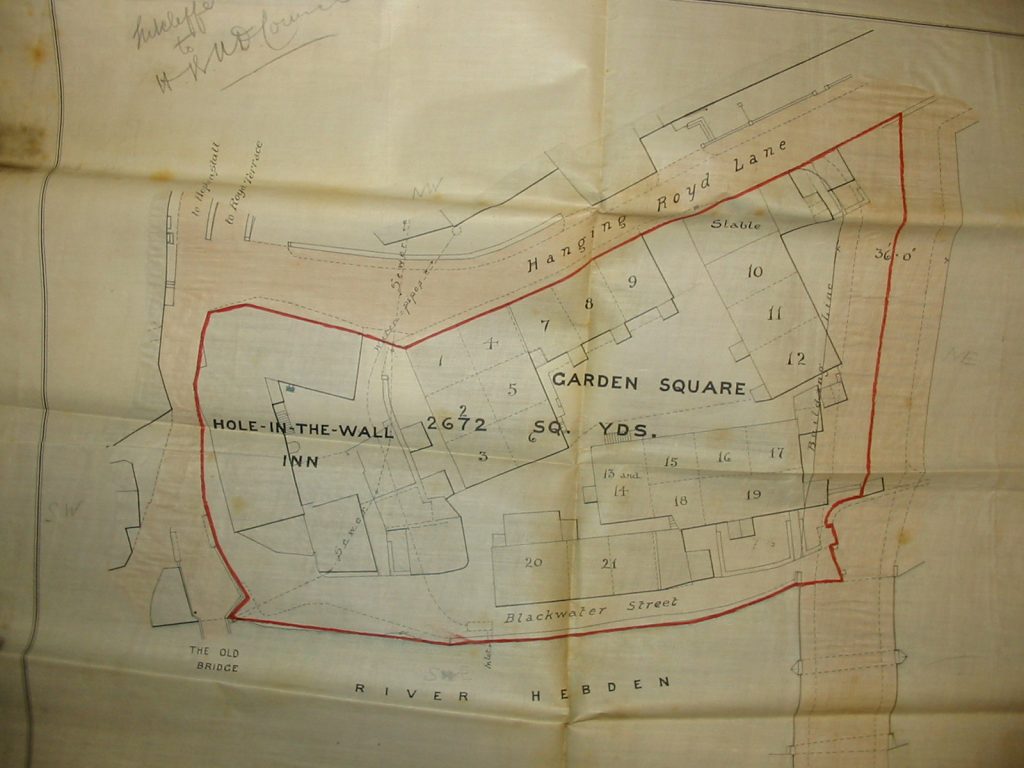
Hague was a fustian cutter, by profession, as was his father, James, before him. On July 6, 1851 Mortimer was baptised in Heptonstall church along with his sister Mary Hannah, and brother James. Mary Hannah was 3 years old at the time and James was just a few days short of his first birthday. It was a common occurrence for several children from one family to be baptised at the same time. By the time of their christening the family had moved to Machpelah where Mortimer’s great grandfather, James Moss, had set up a fustian making business in an upper room which I had the fortune of visiting recently when the property went up for sale.
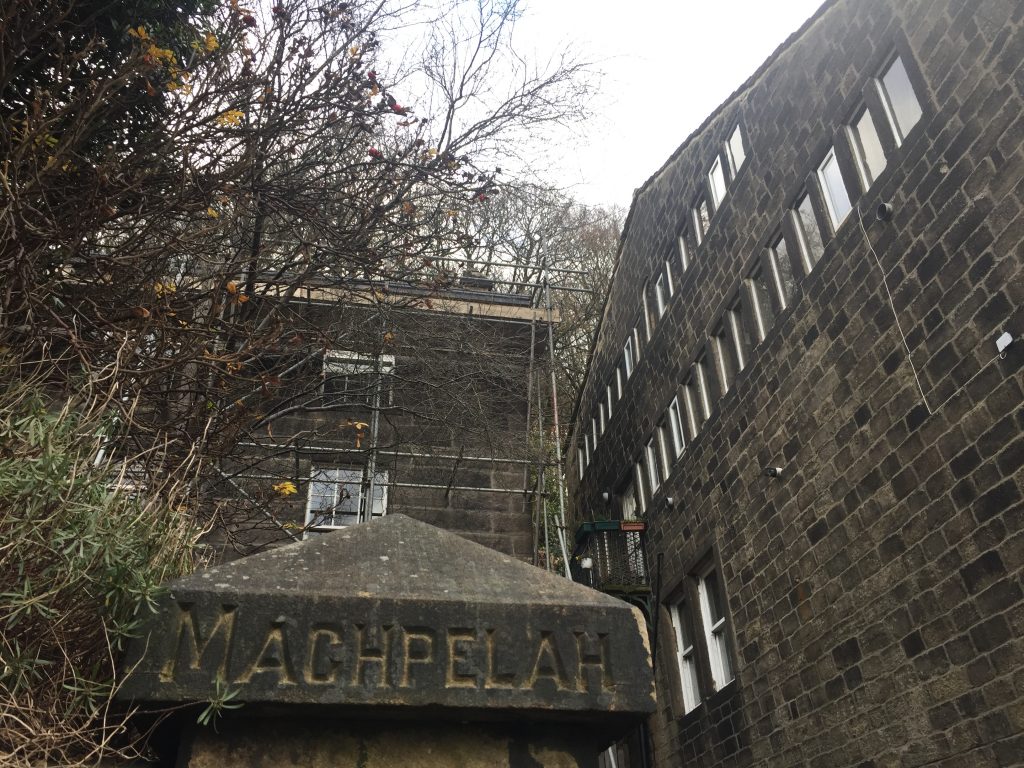

By 1861 Mortimer’s family had moved yet again, this time to live in the tightly packed area of High Street now demolished, and his father Hague was now listed as an employer of one man and two boys as fustian cutters. On the same census Mortimer, now aged 15, is a cotton fustian cutter so it’s possible that one of Hague’s employees was his own son. During their time living on High street two of Mortimer’s brothers had died. John Whittaker was 16 months old and he died 11 months before his brother, Abraham was born. Another brother, Samuel, was 3 years old when he died in 1864 but his mother was 38 at his birth and would have been classed as a geriatric mother and she didn’t have any more children after him.
On April 14, 1869 Mortimer married Mary Harwood in the same place that his parents had married. Mary was the first of nine children born to James Harwood and his wife Mary Ann nee Ashworth. James was a whitesmith living at Foster Clough, a cluster of half a dozen houses high above the Calder Valley near Midgley. By 1851 James had added ‘shopkeeper’ to his whitesmithing business and by 1861 the family had moved to Stocks House Midgley.
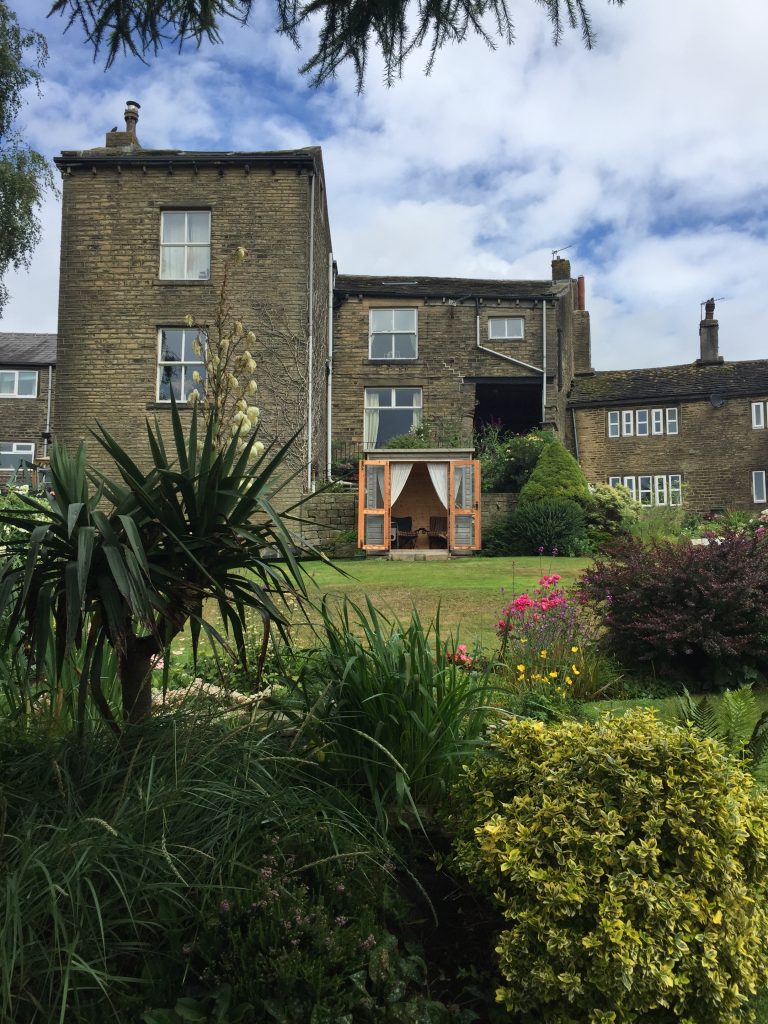
One weekend in 2021 I’d been to the Midgley Open Gardens and had the pleasure of wandering around the rear gardens of Stocks House.
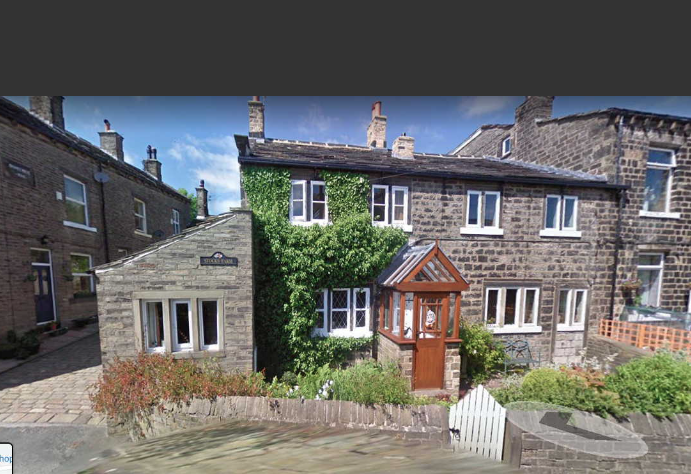
The year following their marriage the first of Mortimer and Mary’s eleven children were born. At first the family lived at Wood Bottom close to Foster Mill. Mortimer was a fustian cutter, a skilled job, but by 1881 the family had moved into the centre of Hebden Bridge and were living on Brunswick Street and Mortimer is listed as a fustian manufacturer although the word ‘employing’ has been crossed out. The 1881 census mentions that 3 houses were under construction on Brunswick Street and 6 were newly built. 5 more children would be born. 2 were twin baby boys who died during their first year, born when their mother, Mary was 41. How amazing it is that when my own twin daughters came to visit in November 2022 bringing my granddaughter to meet me for the first time they selected a place to stay on Brunswick Street, having no knowledge of our ancestral connection to the street. A few doors along from Mortimer’s family was the family of Handel Halstead, another ancestor whose story is to be found on another chapter in this blog.

An incident in the Spring of 1880 illustrates the level of achievement Mortimer had reached within the Hebden Bridge community while at the same time shows the plight of many of the workers in the town, especially the prevailence of misfortune due to intoxication. Mortimer was foreman of the jury into an inquest into the death of George Crabtree whose dead body was found in Colden Beck. Presumed he fell down a steep scar at Ragley above Eaves Bottom mill while in a state of intoxication. The body was washed down the clough the next day there being an unusually strong current and was recovered at Eaves Bottom and from there removed to the Bull Inn. Evidence given by PC Eastwood (the same policeman who had dealt with the drowning of Paul Taylor’s son in Colden Beck just a month before) ‘Only last week I was cautioning him I told him that he would some day be either getting killed or drowned if he continues to come home from Hebden Bridge the worse for drink. The road from valley up to the hilltop village of Blackshawhead runs along the side of a valley which is precipitous, the road being unfenced in places. A witness on Bridge Lanes saw him ‘badly drunk. He was staggering.’ A woman was wringing some clothes by the window when she saw the body in the river. She alerted some men at Eaves Bottom silk mill and the men pulled him out.
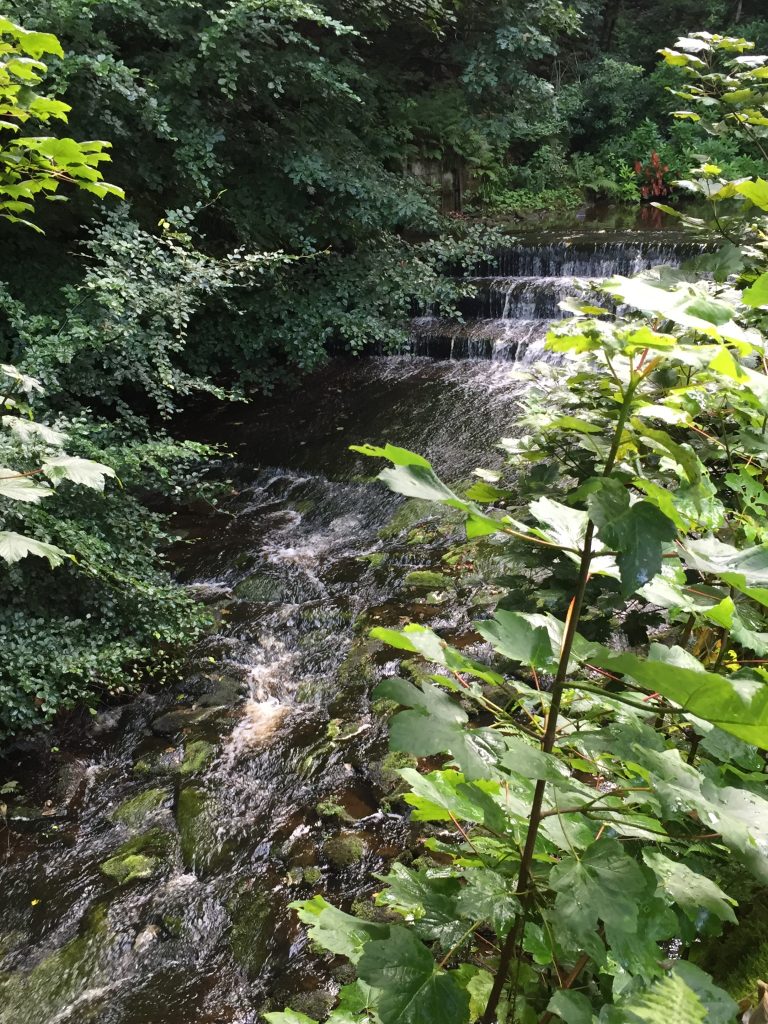
George, a widower, had worked as a scutcher tenter . According to a website explaining the various jobs in a cotton mill “Scutching is the separation of the valuable fibres from the woody seeds of the raw cotton. Considered one of the worst jobs in the mill – very low status!”
Later that year on the 6th of August 1880 6 year old Alfred Cobbe was found drowned in the canal at Hebble End wharf. Alfred had been playing with his a 6 year old friend James Heap around 5 o’clock in the afternoon. Alfred had a syringe and as he knelt down to fill it he overbalanced and fell into the canal. James ran to tell Alfred’s mum but when they got back to the canal they couldn’t see him. While they were searching for him Mortimer came upon them and learning of the situation he turned back for the grappling irons and started to search. He was on the opposite side of the canal from the tow path and the 4th time of casting in the grapples brought the body to the surface. The body would have been in the canal for ¼ of an hour. An inquest held at the Bull Inn, the same inn that George Crabtree’s inquest had been held in, returned a verdict of accidental death.

The cafe at Hebble End is often where I can be found in the early evening on sunny summer days, sitting outside the cafe overlooking the canal with a glass of cider reading a book while keeping one watchful eye on the geese while a large flamingo stares down at me!
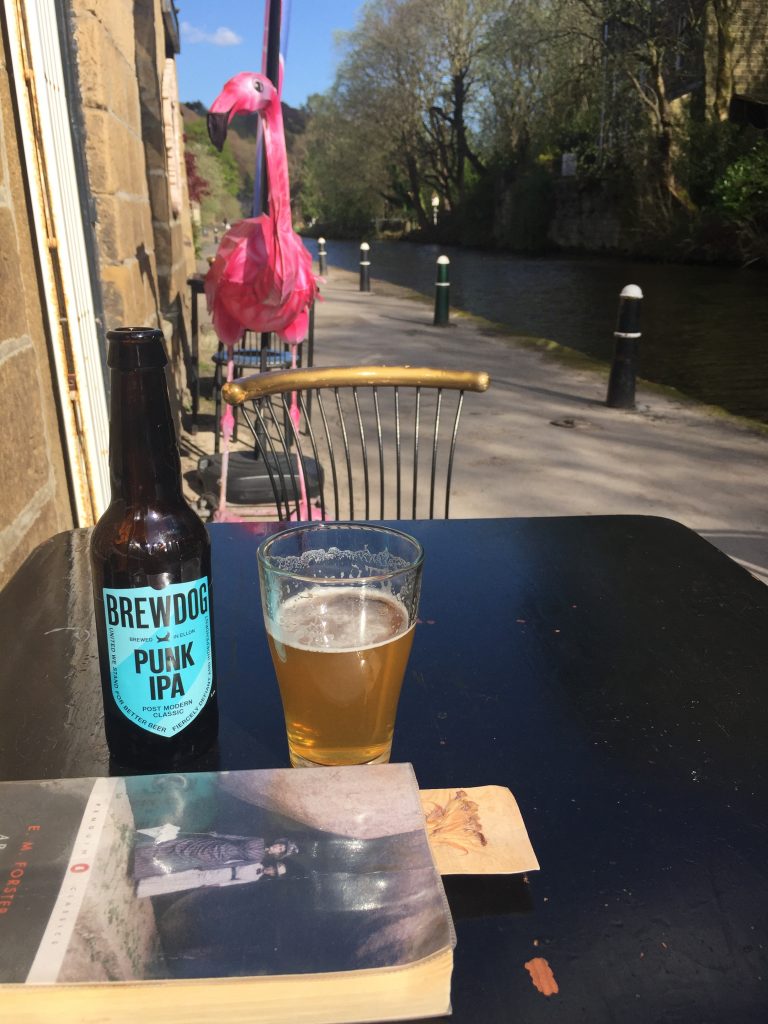
The building is part of Hebble End Mill and now houses some small shops and art studios, along with the cafes. In the Spring, during mating season the geese are aggressive and will actually attack the unsuspecting person out for a gentle stroll but by May the goslings hatch and one such evening I sat and watched 6 furry goslings trying to fit beneath their mummy’s wing. Once I learned of young Alfred’s unfortunate demise in this very spot I found myself always remembering his early death when I sit by the canal.

From Hebble End it’s only a five minute walk to Brunswick Street where Mortimer was living in 1880, having been living at Wood Bottom since his marriage to Mary Harwood. Opposite the terraced houses is a large four storey former fustian factory that’s been converted into apartments. This was Brunswick Mill, built in 1883 owned and operated by the Moss Brothers. In the National Archives I found the following description: “The business started about 1867 although the Moss family were engaged in the neighbourhood for some time prior to that date. Mr H Moss died in 1870 and from that point the firm was known as Moss Brothers. The original site of the business was at Hebble End, Hebden Bridge, between the canal and the River Calder. (The current site of the Coop). In c1881, however, as business improved they acquired 3-storey premises in Brunswick St for their warehouse and a factory in Market St and dye works at Bridgeroyd, Eastwood, Todmorden (the building is still there and used as a warehouse). They produced a variety of fabrics including corduroy and moleskins. By 1890 they employed over 200 people and traded with America, South America, New Zealand and Europe. They also had a London Office at 1 Trump St, King St.” The upper floors of Brunswick Mill are accessed by the street above and so I pulled myself up to Melbourne Street. As I reached Melbourne Street the clouds which had looked threatening earlier in the day had decided to release their rain. There was a long row of houses on my left, their front doors opening directly onto the street and since there are no back doors the wheelie bins and recycling bags were strewn along the pavement. Flower pots and garden ornaments strove in vain to obscure next week’s contribution to the nearest landfill. I was in search of number 13, Abraham Moss’s home. I made my way past identical houses – 1, 3, 5, 7, 9, 11. But there the regularity stopped and a long low building, designated Melbourne House had two doors with buzzers alongside for several apartments. I was so disappointed. I looked further along the street and recognized the spot where I’d taken a photo of a man standing on a wall hanging out his washing when I’d stayed on the next street in 2016. I’d ended up composing another movement for my piece for concert band – Liquid Sunshine, so I headed towards this inspirational washing line! What I found surprised me, but it was unconnected with the washing line. The houses on my left began again, this time beginning with number 13, and yes, the door was open! I tried calling ‘hello,’ a few times into the darkened hallway but though I could hear voices inside I didn’t get any reply. As I turned to leave I noticed a man tending a small plot of land on the other side of the street. I explained my quest and he told me that the long low building between the houses had once been a mill and had been converted into apartments around 2005. Ah, that was making sense. I’d found the upper entrance to Brunswick Mill with its main entrance on the Brunswick street, the street below. I thanked him and returned to number 13 where, after a few more hellos into the darkness a man came to the door. He was interested in my quest, especially when I showed him a photo of Abraham Moss. “Just a minute. I’ll go and get the house deeds.” A few minutes he returned with papers in hand showing that the building had been built in 1883 and had belonged to Mortimer Moss, Abraham’s eldest brother. I think the man was quite surprised by the yelp I let out realizing that I’d just found Abraham’s house, and Brunswick Mill, the family’s first mill and the beginnings of the English Fustian Association. For a few moments the man was distracted less by my yelp than by his mother-in-law coming out to tell him to put on some shoes, since he was in stockinged feet and the rain was now quite relentless. Just as I took my leave a young man carrying some shopping bags came up the street. “When was the mill converted?” asked my man directing his question to the newcomer. “Well, me and me mates used to play around in there when it were derelict – and I’m 28 now. Eee, we ‘ad a reet ol’ time in there!” Living next door to Abraham at number 15 was his brother, Frederick, also a fustian manufacturer. It made perfect sense that the owners of the mill were living literally next door to it, and Mortimer just across Brunswick Street.
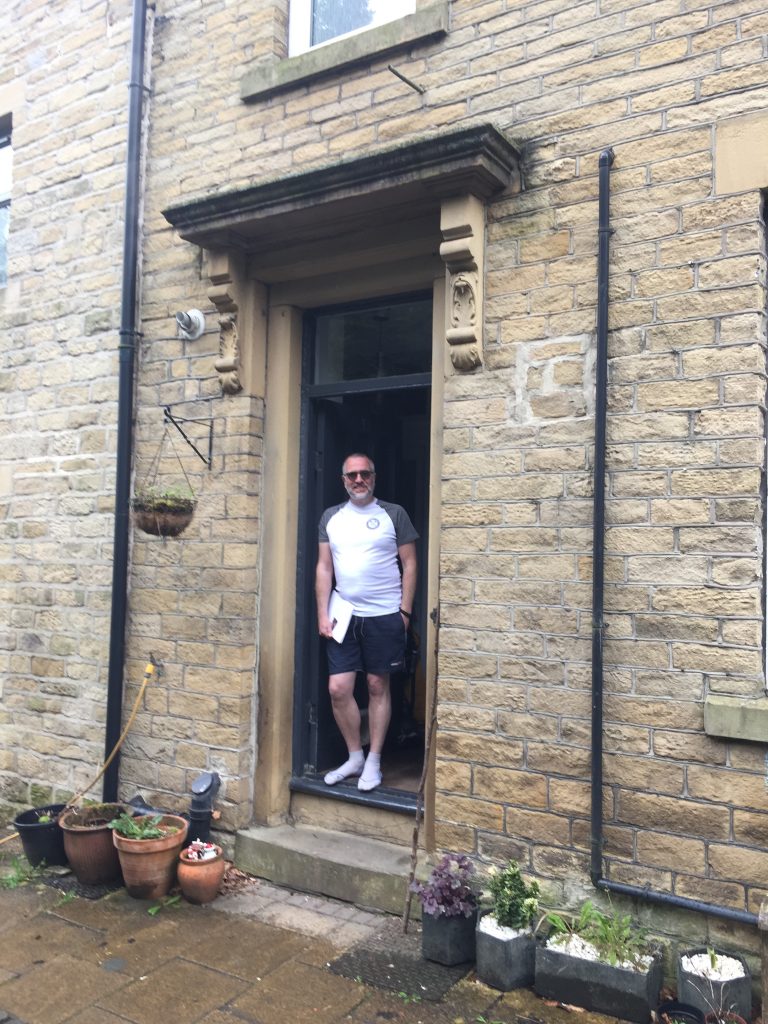
An 1885 report in the Todmorden and District News was very pertinent to the Covid pandemic of 2020 when four families were brought before the Todmorden petty sessions because they had not had their children vaccinated. Members of three of the families appeared before the sessions, raising conscientious objections, and pointing out how their previous children had previously suffered after receiving vaccinations. They were ordered to get their children vaccinated and pay the costs. In the case of Mortimer Moss, who did not appear at the sessions, a fine of 5/- and costs was imposed. Mortimer’s brother James, who was present at the sessions said, “I shall not have my child vaccinated, and I will pay all the fines you put on me.” In 1867 it had became law that all children under the age of 14 needed to receive the smallpox vaccine but there was much resistance to this law. For some Victorians these laws marked an infringement of civil liberties for the sake of improving public health and mass demonstration were held in many places throughout England. In 2021 several times I looked from my window in the centre of Hebden Bridge to see people gathering in the street below with placards urging people not to get vaccinated against Covid.

In several issues in February and March 1889 of the Todmorden advertiser a detached house was advertised to let with or without stable and coach house. This was Nutclough House. In Bryan Moss’s extensive research he states that it was taken by Hague Moss but by 1891 Mortimer’s family had moved in back to the Nutclough area which was above the smoke and grime of the factory chimneys in the valley bottom.
1891 November 13 Arthur Wood farm labourer of Ferney Lee Midgley was charge with stealing game without a license to do so. According the the report in the newspaper Mortimer Moss’s wife, Mary testified –the defendant came to my house and wanted to sell her a brace of grouse. He wanted 5/6 for them and she gave the money to him and her took the grouse out of his pocket. No gun license. Said he had found the birds. Had tried the landlord of the White Swan and also to a game dealer in HB but they wouldn’t give him the asking price. Fine of 10s for each bird and 15/6 costs. The original Nutclough cotton spinning mill was built in 1797with water from the stream known at Ibbotroyd Clough providing the power. By the mid nineteenth century firms of dyers and finishers were taking over fustian cutting, which was still a hand craft, but meant that fustian cutters were losing their independence. A group of local fustian cutters, including Joseph Greenwood and James Moss were keen to start a cooperative workshop, becoming first signatories of the rules of the Hebden Bridge Fustian Manufacturing Society registered in 1870. The Manchester Co-operative Congress had taken place shortly before this, and this influenced Greenwood and others who were already supporters of the principle of profits to labour. Having set up their first workshop in Crown Street, they were very active in persuading cooperative stores in the valley to give them orders. In 1873 Nutclough Mill was purchased by the growing Hebden Bridge Fustian Manufacturing Society. HIn the 1880s and the 1890s it was extended and converted to steam power. As I passed the imposing building today I noticed for the first time a sign on the door The Nutclough Hotel.

I knew that it had become a hotel after the Moss family left but I’d never see the sign before. It’s a large two storey detached house on the Keighley Road, close to the river running through Nutclough woods and the reservoir that once provided the water for Nutclough mill directly opposite.
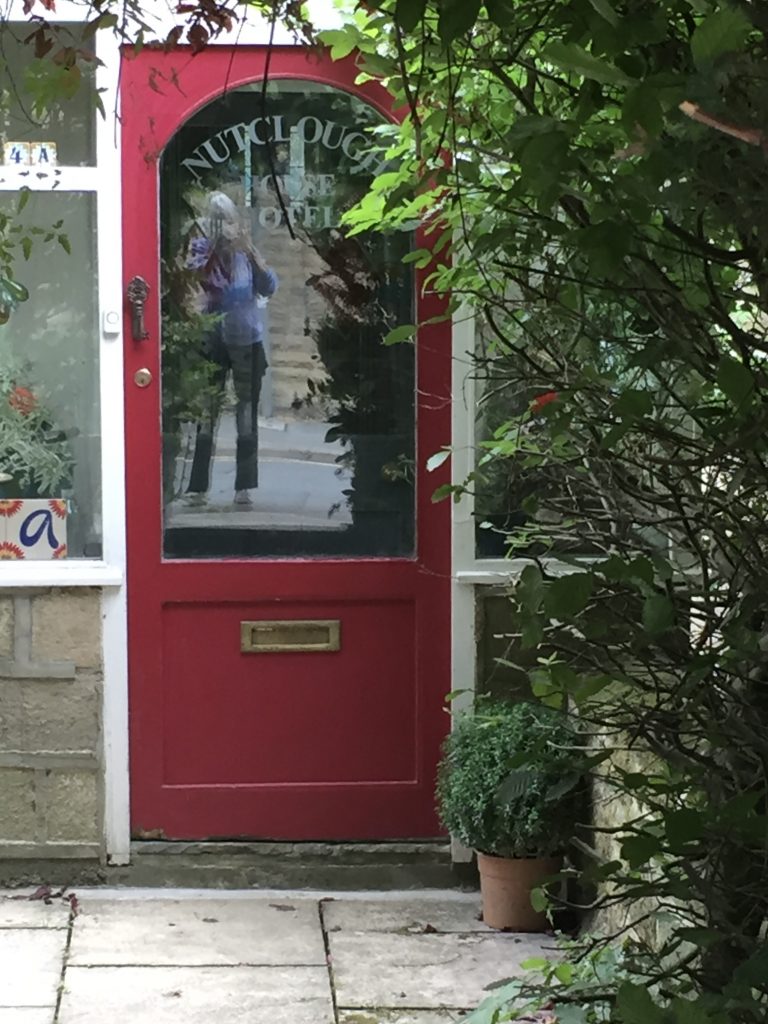
Behind the house is a retaining wall, taller than the building, above which are up and over 4 storey houses on Eiffel Street. I went up to Eiffel Street to see if I could see into the rear garden of Nutclough house since I had found many references to Mortimer’s wife being a successful gardener. In 1892 she won 5/- for hand bouquet of wild flowers that she entered in the Hebden Bridge floral and horticultural annual show. Two years later it was Mary’s turn to present the prizes at the Hebden Bridge Sports Day, accompanied by music provided by the Black Dyke Mills band for whom I have a special affinity having seen them in rehearsals and concerts during one of which the conductor introduced me to the audience as a ‘rich Californian!’
With pictures of Mary’s beautiful colourful prize winning flowers in my mind’s eye I was fortunate to find a resident of Eiffel Street attending the potted plants outside her front door. She told me that the houses on Eiffel Street were built in 1898, and I thought of the difficulty of building these four story houses on the near vertical hillside. I jested with her that these retaining walls must have been well built unaware that in the very same year the retaining wall at the rear of Nutclough’s garden shunted into the yard.
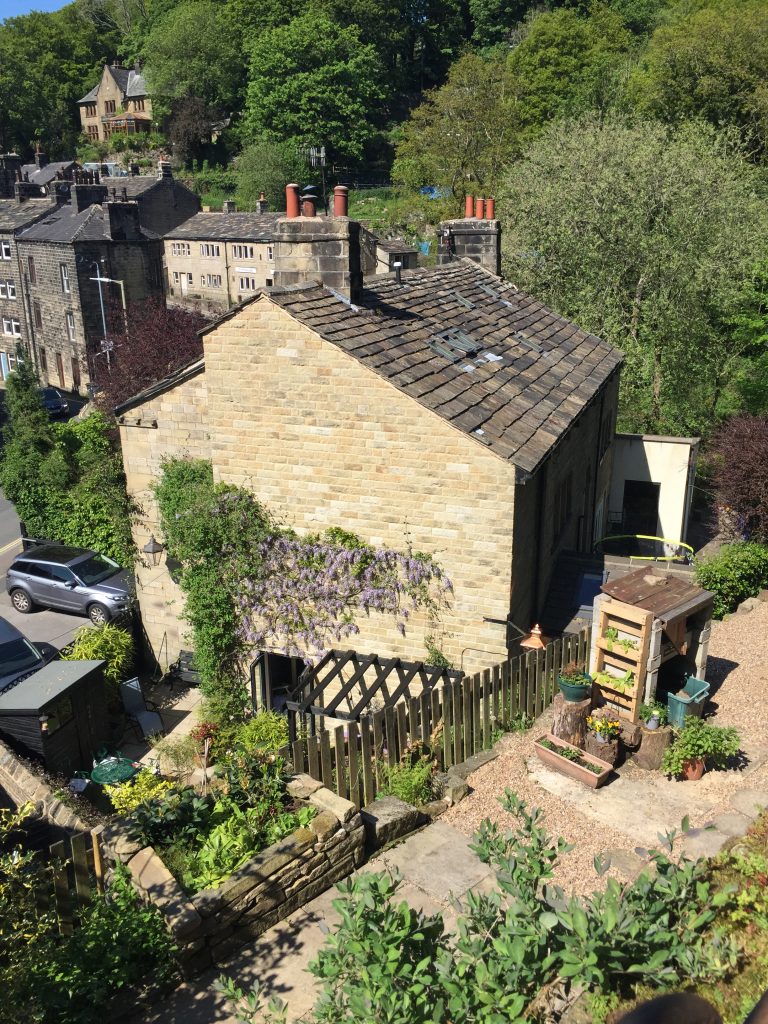
As the newspaper reads: “October1898 For some time the wall had been noticed to be giving way but how to remedy it was a difficult problem. When the collapse came happily there was no one in the way although only a few minutes before several children had been walking on the new burr wall which was almost completed and partly railed. The collapse is described by an eye witness as terribly startling. This can easily be imagined seeing that tons upon tons of debris including stones weighing several hundredweight fell many feet. If any of the occupants of the house had happened to be passing they must have been killed outright and buried. The debris filled the yard behind crashing down four or five hen cotes and damaged 700 or o winter bulbs which were laid ready for potting. The only living things sacrificed were poultry; it was at first feared that a valuable dog had been buried in the rubbish but the animal was found to have been elsewhere at the time. A rough estimate of the damage put it at from £200-300.”
The following month in a further landslip Nutclough house was again the receptacle of several carts of soil. It was noted that ‘Mr Fleming, his groom, made good his escape.’ Presumably the construction of the houses on on Eiffel Street had destabilised the ground and after heavy rains in the autumn the weight of the water-soaked soil caused the landslides.
The same man, Mr J. E. Fleming, had, on Tuesday evening, February 4th, narrowly avoided being drowned. He was at Nutclugh feeding the hens and a pullet had got into a slam. Fleming tried to reach it and in doing so slipped and fell into the water himself. Fleming tried to reach it and in doing so slipped and fell into the water himself. He screamed out for help and Mr Harwood Moss, Mortimer’s son, tried to effect a rescue by means of a broom handle. This Fleming pulled into the water but Mr Moss managed to recover it and as Fleming rose for the second time was successful in leading him to the shallow part so that he could get out.
By 1894 it appears that Mortimer has entered the property market. An article in the local newspaper reads: ” The plots submitted by Mr. Mortimer Moss for the intended erection of 10 dwelling houses on the Hangingroyd estate, are rejected, on the ground that they do not conform to the Board’s bye-laws with regard to the width of new streets.” But by the following year, 1895, Mortimer had successfully purchased the vacant land on Hangingroyd lane from Mr J Sutcliffe, the Lee. 1100 yards – paid 1 pound per yard. “Various rumours have been circulated as to what Mr Moss purposes o do with the land but nothing is known”. Three years later Mortimer was the owner of Eaves Wood at the lover end of the Colden Valley. Five Hebden Bridge lads were charged with setting fire to it and were fined at Todmorden petty sessions.
Later the same year, 1898 one of the sons of late Mr Mullens, a water diviner, was engaged in searching for water in the same Eaves Wood for Mortimer.
One of the most famous British water diviners. He was born at Colerne, near Chippenham, Wiltshire, on November 12, 1838, into a family of 11 children. His father was a stone mason and Mullins followed the same trade. At the age of 21, while employed by Sir John Ould to build a house in Gloucestershire, a dowser (water diviner) was employed to locate a water supply. Various people present tried their hand with the divining-rod, including Ould’s daughter, who was frightened when the rod suddenly turned over violently. An abundant water supply was found at the spot. Ould was most impressed and later asked all the workmen on his estate, about 150 men, to try divining with a rod. When Mullins tried, the rod moved so violently it snapped in two. Thereafter Mullins was considered a dowser, although he continued in his trade as mason. He married in 1859 and continued his trade as a mason, however he devoted the last twelve years of his life to dowsing and well-sinking. He was immensely successful, locating over five thousand sources of water. After his death in May 1894, his business was carried on by his sons, one of whom was a dowser, although not so successful as his father. The firm of John Mullins & Sons was one of the most famous businesses of its kind, claiming royal patronage. (from Encylopedia.com). So John Mullens’s son came to Hebden Bridge and sought a water supply in Eaves Wood. “He succeeded in spotting 14 or 15 places where water could be found and none of them at no great depth below the surface. The system employed was the same as that adopted by his late sire – the forked hazel twig.”
1912 March 22- Eaves estate had been purchased for 3500pounds from the executors of late Mortimer Moss by a number of persons who found themselves out of employment during the cotton strike of 1907 with the idea of starting a manufacturing concern on co-partnership lines to be named Eaves Self-Help Limited. It is proposed to erect a weaving shed behind the larger mill. A large portion of the site is suitable for dwelling houses, there being stone quarries on the site for building purposes. Pennine Horizons tells of the fate of the self help concern: The Eaves Mills, Upper and Lower, had been silk mills but ceased trading early 20th century and were taken over by a workers co-operative for weaving but the venture failed and the mills were eventually demolished after the First World War and the site became a housing estate.
By the time he was 45 Mortimer is listed as a fustian manufacturer in his own right. Like most of the leading industrialists that I’ve researched not only was Mortimer a leading business owner but he made significant contributions to other areas of society, for, after all, his employees deserved looking after. Like many of the business men Mortimer was a free mason, as was my own father. In 1889 Mortimer had taken a leading position in Littleborough being installed as worshipful master at the Littleborough masons Benevolence lodge, an acting master of the lodge. Also of note is the strong affiliation that many of these business owners had with the masonic lodges, though it must be a mere coincidence that the school building that the Moss family constructed on Hangingroyd Lane later became a masonic hall – and is currently up for sale for £150,000, less than a one bedroom apartment sells for in Hebden Bridge, because it’s been deemed structurally unsafe. (Update: Summer 2023. It’s been purchased by a developer and is being converted into apartments.)
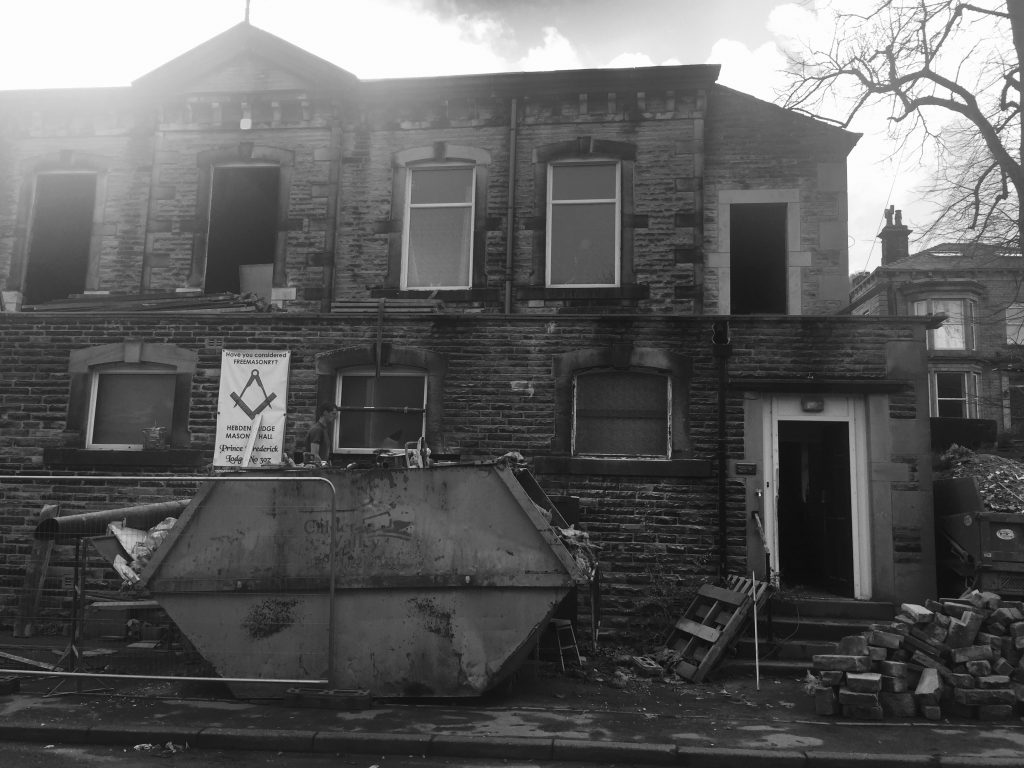
I find it remarkable that every one of these men are related to me in some way – but then again, perhaps it’s not so remarkable since all the leading fustian families in the town intermarried. On December 10 1894 five Fustian Manufacturers stood for the Council as Temperance Candidates including Mortimer, his brothers Abraham and James, and two relatives by marriage Richard Redman and Charles Lord. The wives of these prominent figures in town were also hard at work and highly visible in the life of the community. The summer of 1895 saw the fifth annual gathering of united choirs from the particular baptist churches of Lancashire and Yorkshire. Hope Street Sunday school (now the town’s library) was kindly lent for tea purposes and more than 500 friends turned up. “The visitors were highly pleased with their tea and the ample manner in which they had been served. Heading up The trayholders were Mrs Mortimer Moss, Mrs James Moss, Mrs Fred Moss, Mrs Abraham Moss,” along with another nine ladies. After tea they should have adjourned to Zion Chapel but it was too small for the 500 attendees so they obtained permission to use Hope Chapel for their renderings of pieces from Handel’s Messiah and Haydn’s Creation. This chapel, less than a minute’s walk from where I live is still the venue for many performances. I’m currently looking forward to seeing The Spooky Men’s Chorus perform there next week.

On September 2nd 1895 Notice was given that the partnership between the four Moss brothers, Mortimer, James, Frederick Hague, and Abraham Moss carrying on the business as Fustian Manufacturers, Merchants, Dyers, and Finishers at Brunswick Works Hebden Bridge, at Bridgeroyd Dyeworks, Eastwood, and at No 1 Trump Street, in the city of London (!) and elsewhere under the name of ‘Moss Brothers’, was dissolved by mutual consent so far as regards the said Mortimer Moss, who retires from the firm. All said businesses will for the future be carried on by the said James, Frederick Hague, and Abraham Moss, under the name Moss Brothers. Mortimer was just 49 when he retired which suggests ill health, and sure enough four years later he died at the family residence of Nutclough Clough house on March 25, 1899. He died somewhat unexpectedly though the local newspaper mentions that during the previous few days he had suffered from bronchitis. The cortege left Nutclough House, bound for Wainsgate Baptist Chapel high on the hillside in Old Town.
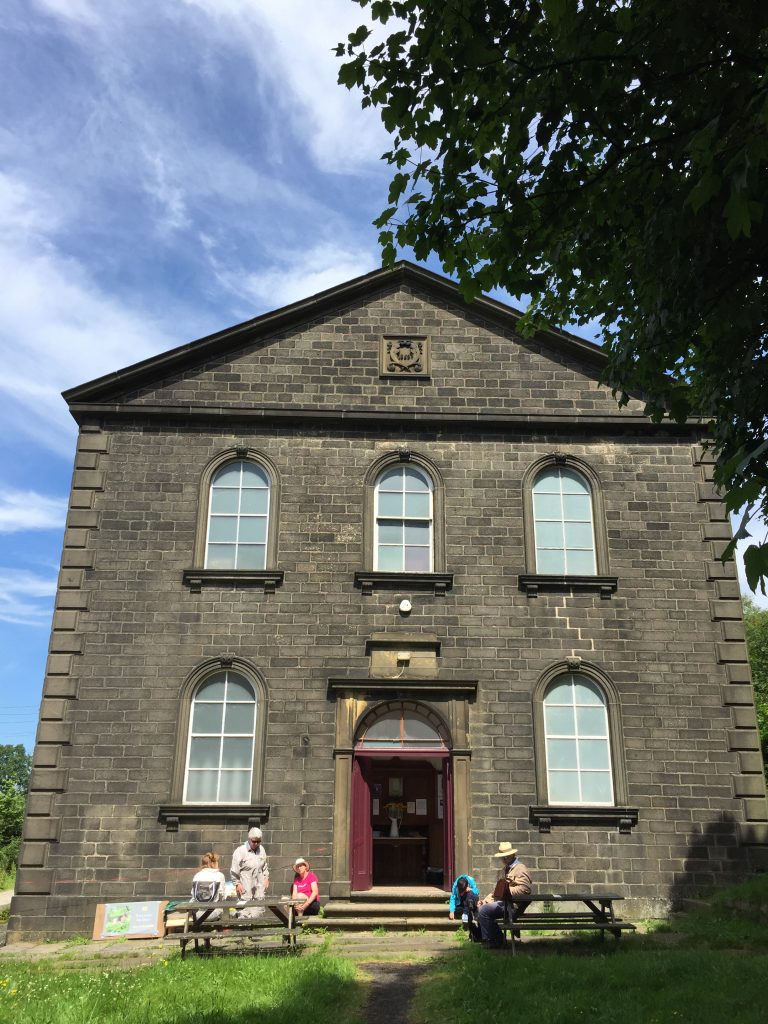
According to the chapel’s website: Today the chapel is a Grade 2* listed building hidden away amongst the trees and hills above Old Town. It is home to various artists who have their studios or workshops in the adjacent Sunday School building, whilst the main Sunday School room is currently used as a rehearsal space, part-time art gallery and as a venue for community events. It is also available for hire. The Chapel itself seats up to 300 and is used for special events, the occasional funeral and for an annual series of concerts held between April and October.

(Update: I attended one last weekend and am looking forward to the history open day tomorrow, especially since I’ve recently discovered that one of my Kershaw ancestors was responsible for the extension and redevelopment of the graveyard adjoining the chapel).
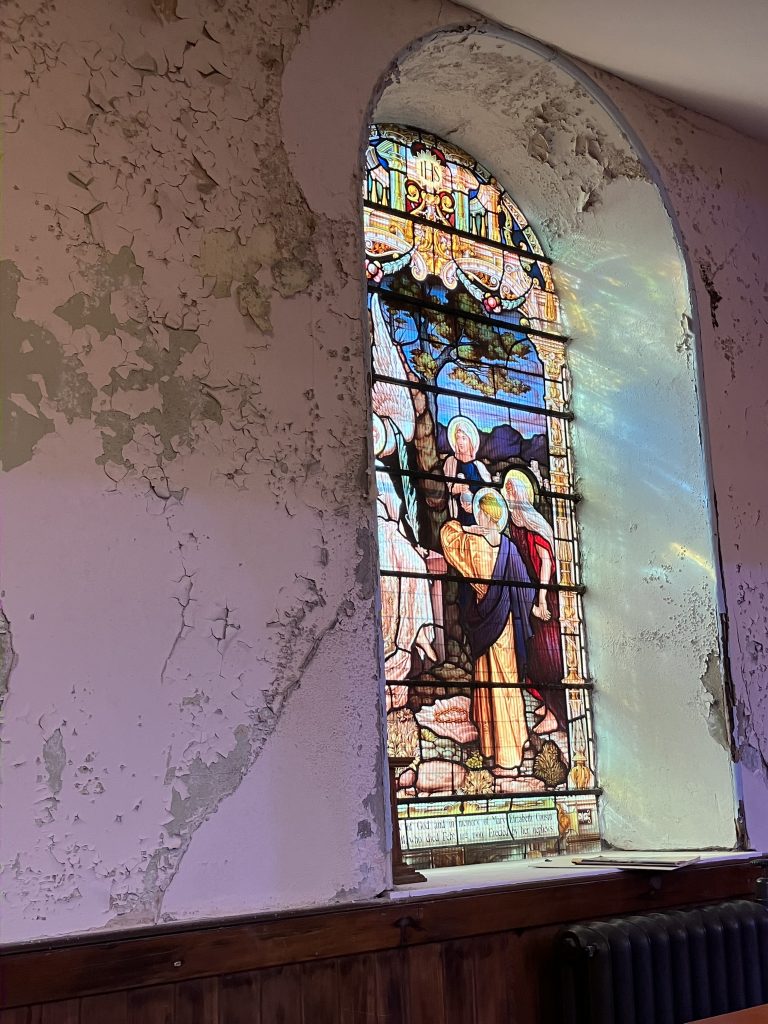
The newspaper account of Mortimer’s funeral read: In front of the hearse walked members of the Littleborough Benevolence Masonic Lodge followed by seven mourning coaches. As the cortege passed many of the neighbours showed respect by drawing their blinds. The coffin was pitch pine and walnut, with heavy brass furnishings. His fellow masons bore the body into the chapel and to the grave side. The Rev. Joseph Smith, pastor of Zion Particular Baptist church, read the 90th Psalm, after which the Rev. W. Jones of Hope church, offered few remarks. concluding with prayer. At the grave side Mr. Smith addressed the company concluding with prayer. The Freemasons filed past the grave, each dropping a spray of acacia on the coffin. It was finding Mortimer’s memorial at Wainsgate Chapel quite by chance in June 2022 that led me to find out more about this man whose estate at the time of his death was worth £20, 108 2s 5d, an equivalent of almost £3 million.
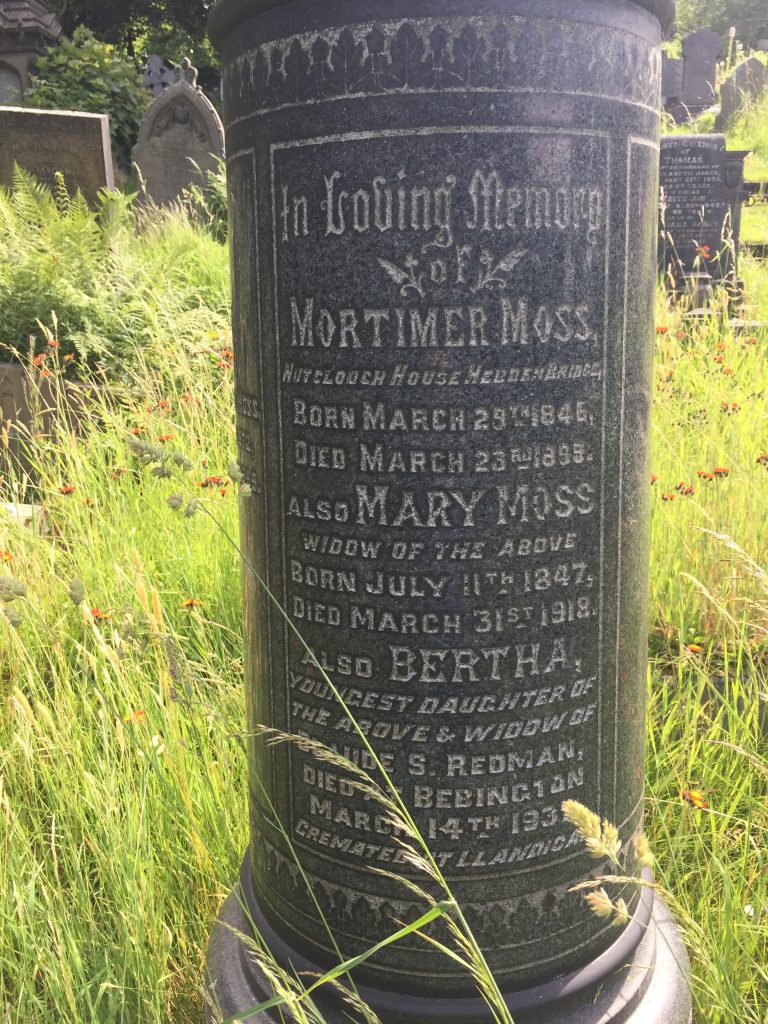
Just three weeks later Mortimer’s only surviving son Harwood, named after his mother’s maiden name, died at Nutclough House. Harwood was in business with his father on Crown Street working as a bookkeeper – the street I currently live on. Apparently they had a warehouse at 11 Crown Street. The building currently holds Weighsted, a sustainable food product shop, and Blue Sky Bakery. According to the newspaper “The deceased who was 26 years old had had a severe cold for several weeks. On Monday night, feeling rather worse than usual, he went to bed early. The following morning be began to be delirious and he continued in that state until his death.” His death certificate records the cause of death as Inflammation of the lungs and pneumonia. Like his father he was buried at Wainsgate Chapel and his name was added to his father’s memorial.
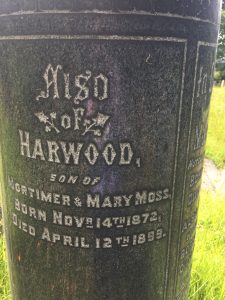
Mary found herself head of the household, still living at Nutclough House with her four daughters. Her brother, Wallace, moved in, perhaps to give support to the family. He was carrying on the Harwood family tradition of whitesmithing. However, Wallace passed away just three years later at the age of 42.
By 1909 Mary was living at Ibbotroyd, an imposing mansion on the steep road to Old Town, when she attended the funeral of Ada Harwood, her brother Edgar’s wife, who had fallen to her death from the trestle bridge at Blakedean.
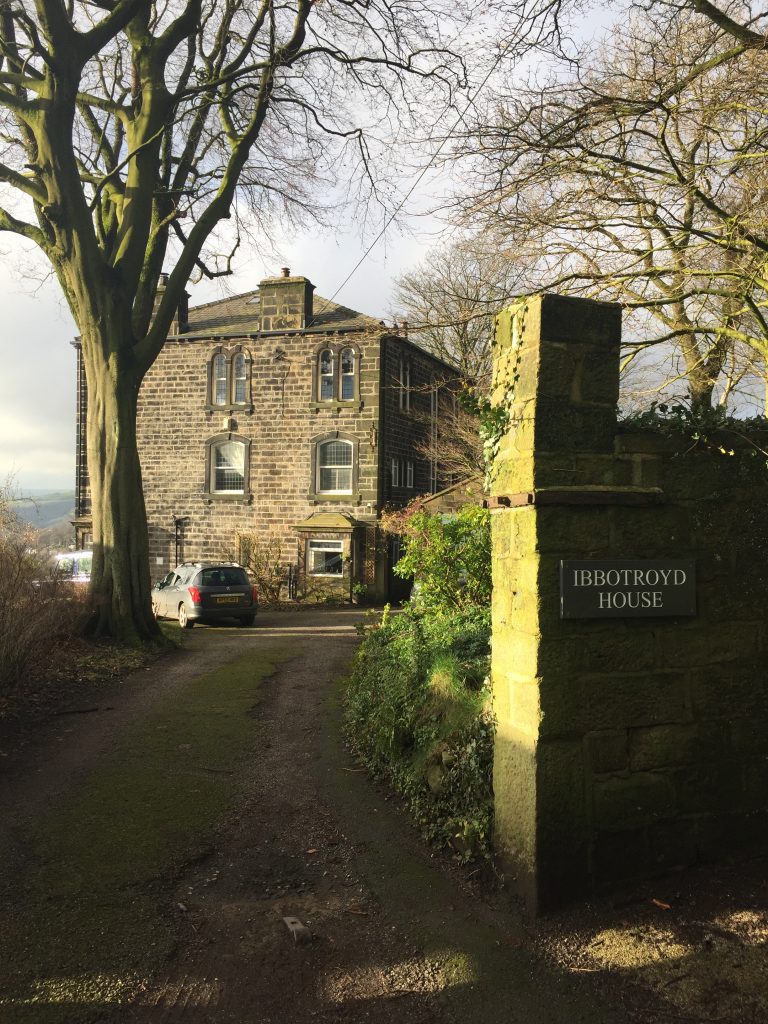
Abraham Moss, her brother-in-law had been the foreman of the inquest jury. Ibbotroyd had been the home of the Hoyle family for at least two generations – another family I can trace back in my own ancestry. By 1911 Mary has moved to Heath Hall, Mythom, an imposing stone building divided into two dwellings. In one, a 7 roomed dwelling, lived Mary and her unmarried daughter Florence, now aged 36. In the other half of the house, containing a massive 13 rooms, lived John Crowther, a retired wholesale fustian clothier and his family of a wife, two daughters and also two domestic servants. One half of the house, presumably Crowther’s, with its 7 bedrooms and 3 reception rooms recently came up for sale for £550,000.
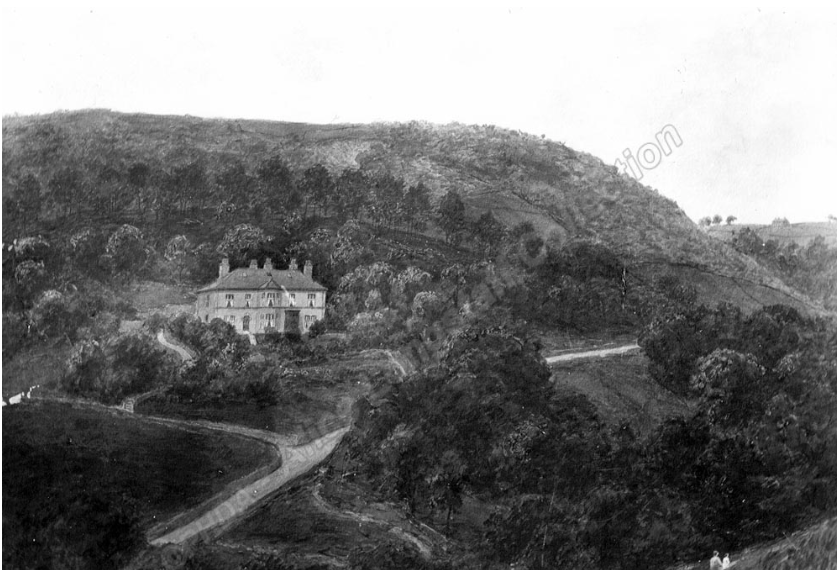
A painting of Heath House, unknown artist 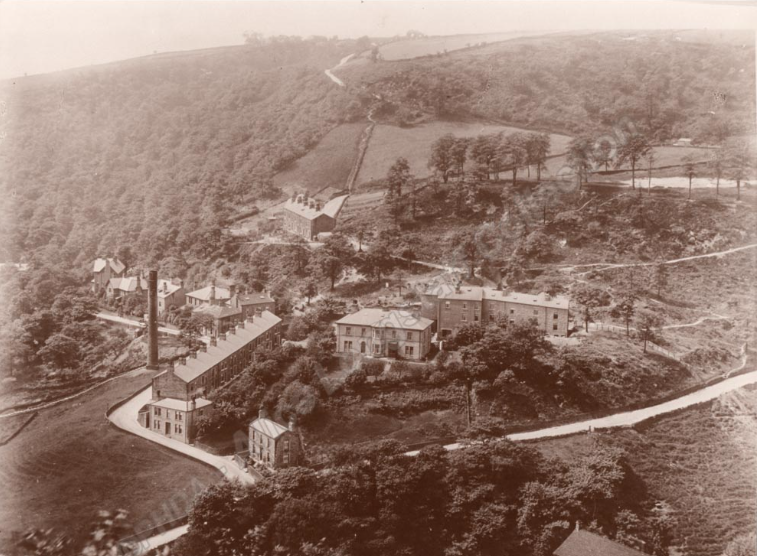
Heath House is in the centre of this photo taken in the 1910s, possibly when Mary was living there.
On March 31, 1918 Mary died, aged, aged 70. According to probate records she was living at Sandy Gate, on the road from Old Town into Hebden Bridge. Today Sandy Gate comprises a Victorian-looking terrace of 6 houses and a much older building, now painted white, containing 2 dwellings. Both
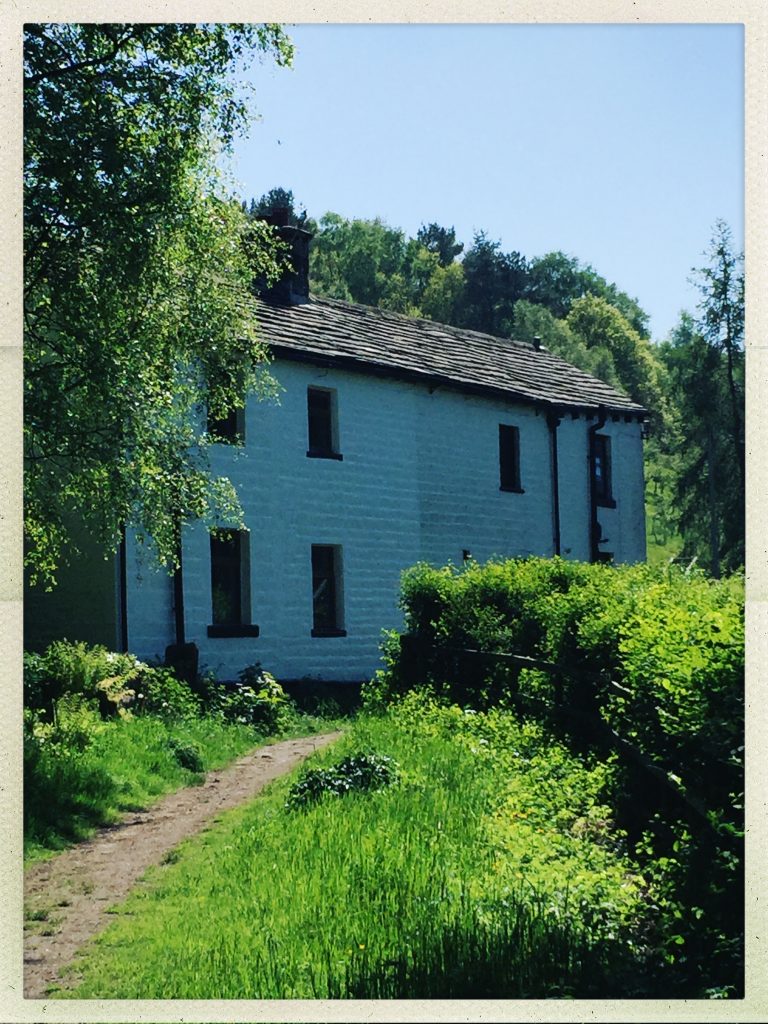
She left her money to her daughter Florence – all £46 15s 1d of it. That’s equivalent of just less than £3,000. Where did the rest of the money go? Mortimer’s £3 million had been left to Mary and her brother James Harwood. Hmm, when James, a shuttle tongue maker died he left £730 in his will to his wife. Where had all Mortimer’s money gone? That’s the million dollar question! Or perhaps it’s the 3 million dollar question.
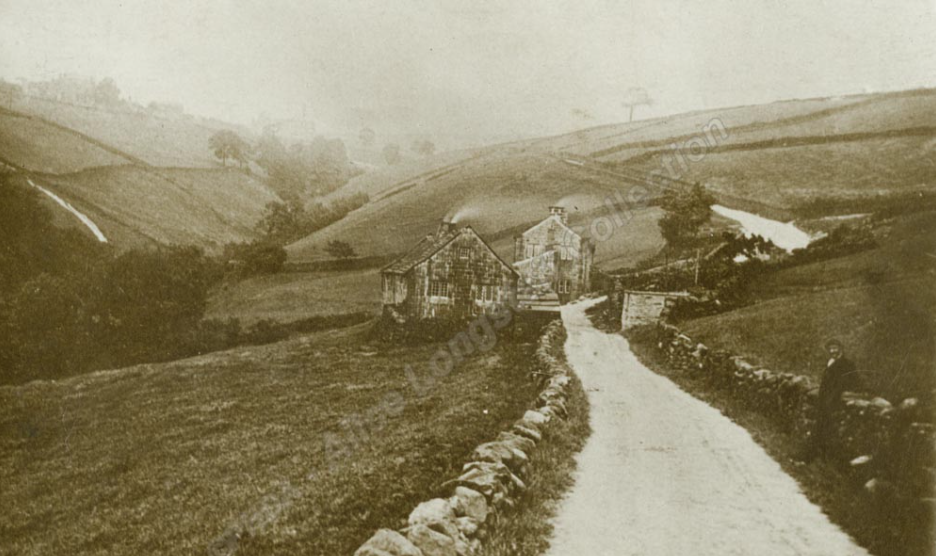
But what had made me started thinking about Mortimer yesterday? With rain forecast for the next few days I wanted to take full advantage of the sunny but windy morning so I headed out to Old Town with thoughts of sitting in the cafe and reading a book (Memoirs of a Fox Hunting Man by Siegfried Sassoon) for an hour and then walking back down to Hebden. Once on’t’tops I decided to have a wander around the cemetery at Wainsgate chapel. I had read that many of my ancestors are buried there but I’d not come prepared with a plot chart or indeed trowels or brushes to help with deciphering inscriptions. As it happened the first inscription that I recognised was that of Mortimer Moss inscribed on an elaborate plinth along with several members of his family. So with the expected rain pounding on my windows the following day, renewing my regard for the accuracy of British weather forecasting, I sat down to write the story of Mortimer Moss, focusing not on his manufacturing concerns which can be found in other sources, but on his family.

Recent Comments